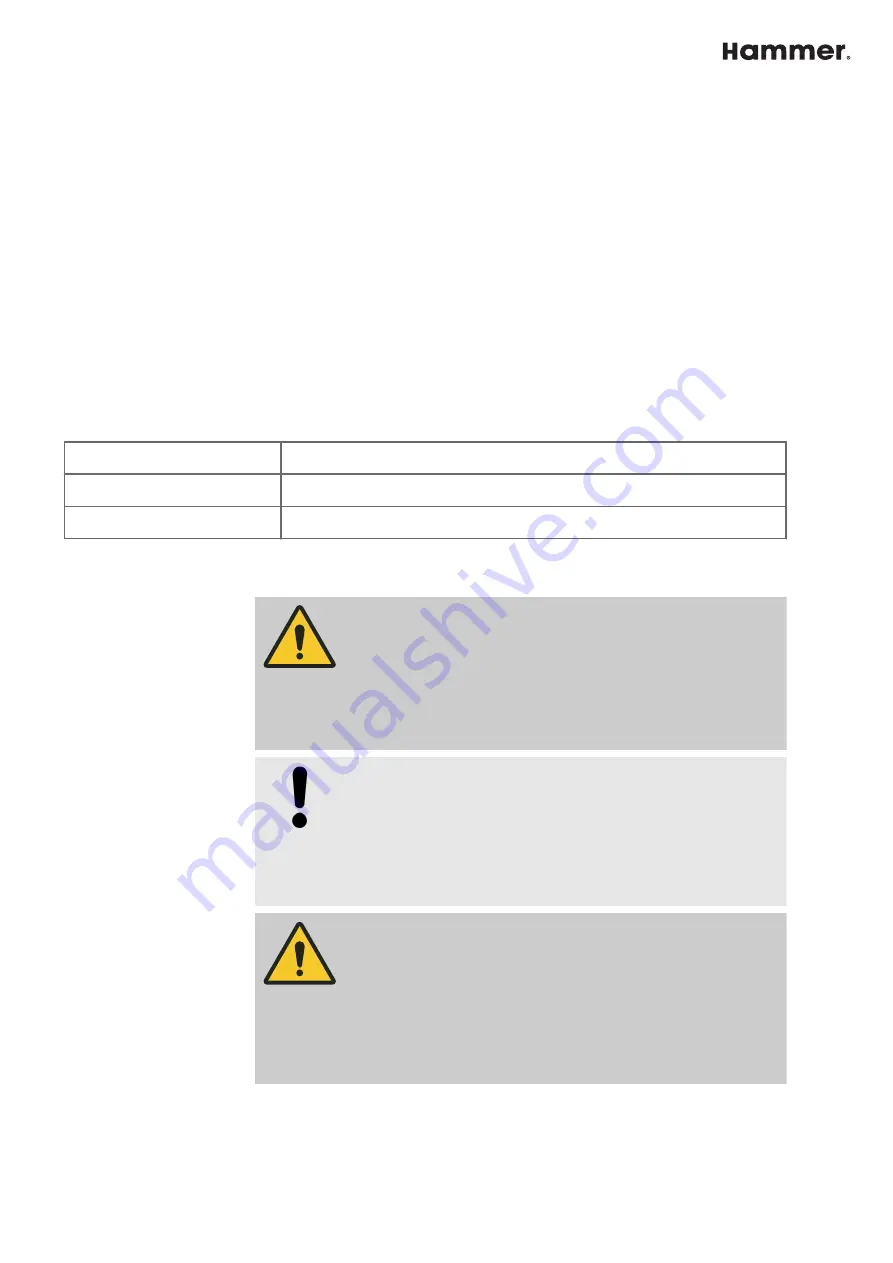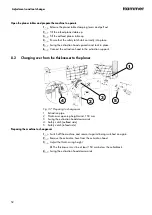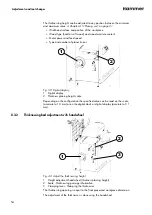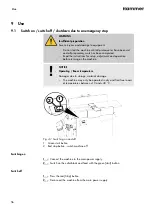
64
Use
9.4.3
Prohibited thickness planing working methods
With the thickness unit, the following working techniques are generally prohibited:
●
Thicknessing several workpieces of varying thicknesses (depending on con-
figuration).
●
Simultaneous planing (the direction of the cutterblock rotation is the same as
the feed direction).
●
Insert planing (the full length of the workpiece is not machined).
9.4.4
Workpiece dimensions (thickness planing)
When using appropriate auxiliary equipment and observing the safety distances
to the surroundings, there are no limits to the workpiece length.
The minimum workpiece length is determined by the distance between the two
transport rollers. Smaller workpieces can only be processed by using extra tools
(e.g. pushing stick).
Length
min. 145 mm
Width
max. 254 mm
Thickness
min. 5 mm / max. 184 mm
9.4.5
Thickness planing
WARNING
Serious hand injuries / danger of being pulled in
Contact with the rotating cutterblock
−
Assume the correct working position.
−
Never reach into the infeed or outfeed whilst the machine is
running (during the process or running idle).
NOTICE
Large differences in workpiece thicknesses
Damage to the infeed rollers
−
If machining several workpieces simultaneously, the max. dif-
ference in thickness from workpiece to workpiece may only
amount to 1 mm!
WARNING
Risk of injury from workpiece parts
Splintering workpieces when working at a larger depth of cut
−
When processing workpieces that are thinner than 10 mm,
only set a small depth of cut (max. 10% of the workpiece
thickness).
−
The finished planed workpiece must not be thinner than 5 mm.
















































